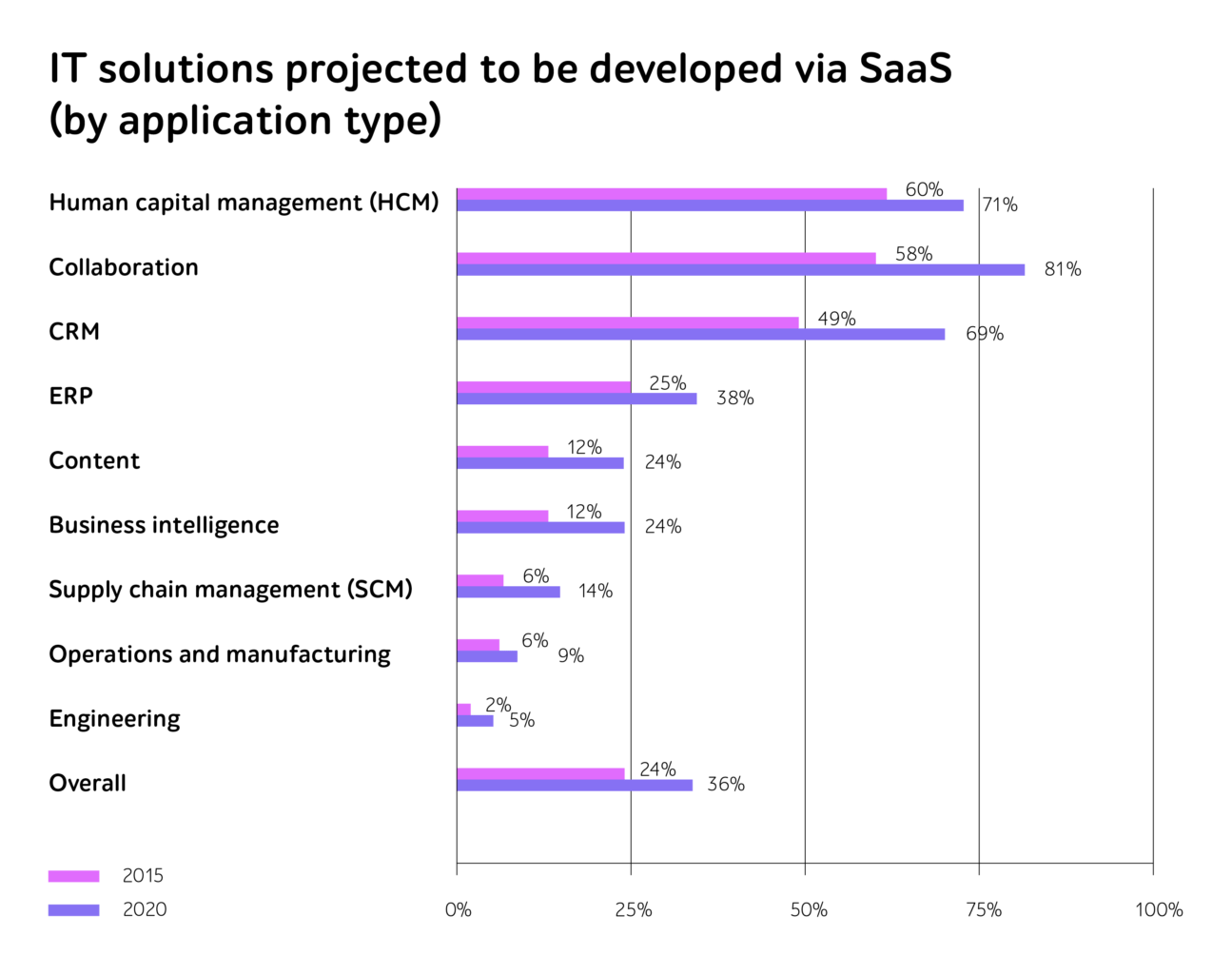
9 QA points for delivering high-quality SaaS-based solutions
When you are reading this, 83% of enterprise workloads are already in the cloud, according to Forbes, while SaaS contributes to 37% growth in revenue of software development vendors.
SaaS model has definitely influenced on changing the classic development processes and shifting them to the cloud. And it’s the right time, as hyper-digital transformation and the lockdown consequences made many companies accelerate releasing time for their software products, so they had to introduce new approaches and innovations into their IT strategies.
Considering such a progressive impact, the IT market is witnessing a surge of SaaS-based applications. The more solutions emerge, the greater demand is generated by businesses.
The measures that companies should undertake to retain customer bases and entice new users reducing their moving to other IT products include implementing proper SaaS testing.
In this article, we’ve gathered 9 QA factors that may help organizations strengthen competitive advantage and keep the leadership in the market. But let’s start with some SaaS peculiarities required to know before executing checks.
SAAS-BASED SOLUTIONS: 4 REASONS TO TEST
No wonder that this delivery model has led to increasing competition in every application category. Statista indicates that in 2020, the overall number of SaaS-based products has grown by 12% since 2015.

That means companies need to be ever more vigilant about providing quality experiences. The reason why businesses opt for SaaS is in its numerous benefits encompassing specific features.
Reason 1. Smart scalability
The option of changing software capacity promptly by request allows tenants to save costs on using cloud services. What’s more, SaaS vendors harness autoscaling mechanism that diagnose the current users’ amount and configure the software according to resize needs.
Reason 2. Regular and rapid updates
Within tight relationship with a SaaS provider, all the solutions’ defects and changes pass through it. As a rule of thumb, the processes of bug fixing and making modifications are fast and frequent. Therefore, one should define a robust QA strategy to optimize running a blizzard of test scenarios at short notice.
Reason 3. Multi-tenancy
SaaS opportunities to use shared cloud resources makes it affordable for a range of various organizations and streamlines software support. Within the approach to provide access to multiple customers, each tenant’s data is isolated and remains invisible to other subscribers. However, a vast number of connections to one vendor may cause difficulties with compatibility and integration. In this very case, improving APIs’ quality can be an escape solution.
Reason 4. Adjustable architecture
One more ground why companies choose SaaS is the ability to customize and specify settings perfectly matching business needs. And this requires thorough supervision, as an inappropriate operation of an IT solution may cause drawbacks after adding some changes that can provoke a growing churn rate.
Therefore, within these specifics, SaaS testing is more complicated than cloud and on-premises apps testing gathering a greater demand and a more profound attitude to QA activities.
9 POINTS TO GET UPSCALE SAAS-BASED SOLUTIONS
To provide a one-stop handbook on performing SaaS testing successfully, a1qa’s experts have prepared a list of 9 QA facets needed to cover the full testing scope and avert going live of bug-prone software.
1. Functional testing
Verifying all levels of connections between IT product components including units, their integration, and system testing, QA specialists check proper operation of functionalities. Noteworthy is that ordinary requirements encompass a myriad of cases tailored to miscellaneous user scenarios. Checking numerous configuration combinations make testing more exhaustive.
2. Performance testing
While on-premises apps are oriented at users’ environment, customer experience in SaaS-based products can be affected by other people. Thus, performance checks are essential — executing stress and load tests, QA engineers identify the upper limits of software capacity and evaluate its behavior under an expected number of concurrent users.
3. Interoperability testing
SaaS-based products entail flawless operation against different browsers and platforms as a prerequisite. Before carrying out interoperability testing, a QA team estimates the most preferable browsers and platforms and distinguishes ones used by a lower number of customers to exclude them. With verifying every browser or platform, QA specialists cover the full scope of testing configurations and provide seamless software operation for a wide range of users.
4. Usability testing
Intending to decrease the churn rate and make a long-term relationship with end users, companies strive to enhance customer experience with convenient app usage at the core. By providing straightforward information architecture, smooth workflows and interaction as well as visual readability and adequate response of generally used functions, one may satisfy consumers with a user-friendly application.
5. Security testing
Within sensitive data, SaaS-based solutions need to enable highly secure storage and disposal of information. Embracing miscellaneous accounts and roles, these applications require thorough validation of access control. To identify vulnerabilities and dodge data breaches, QA specialists perform penetration testing searching for possible bottlenecks.
6. Compliance with requirements
Winning the competition also assumes meeting worldwide standards. Depending on the industry, there might be a need to conduct software testing to comply with HIPAA checklist for eHealth products, OWASP safety recommendations for any-domain web and mobile apps, GDPR for enabling secure data storage and transfer worldwide, and much more.
7. API testing
Connecting with customers’ platforms and other 3rd-party solutions, API testing is a must amid organizations delivering SaaS products. With that, instead of using default user inputs and outputs, QA engineers execute positive and negative scenarios of calls to the APIs and analyze the responses of system interactions. Such approach allows making sure in advance that an API application and a calling solution work in a proper way. It mainly concentrates on the business logic layer of the software architecture.
8. Regression testing
Once having implemented a new functionality, it requires verifying that recent amendments haven’t impacted the developed features. Being an elaborate and cumbersome process, SaaS regression testing incorporates a range of test cases involving all testing types mentioned above and more.
a1qa has experience in delivering comprehensive QA assistance with solid regression testing. Get to know how our QA engineers performed software testing and streamlined assuring quality of the SaaS platform for public housing authorities.
9. Test automation
Alongside optimizing the immersive amount of QA activities and being a great time-saver, automated testing brings such business benefits as cutting QA costs, accelerating time to market, increasing team efficiency, and more.
Test automation is a pivotal element of the CI/CD pipeline that also may facilitate SaaS testing. With the concept of “release early and often” in the heart, it assumes continuously performing checks allowing delivery of faultless software in a strict timeframe avoiding expensive bug fixing.
SUMMING UP
Once having decided to build a truly bug-free SaaS application, there is a need to add SaaS testing in the IT strategy within its specifics including wise cloud resources consumption, prompt updates, multi-tenancy, and customization.
By introducing QA tips from the a1qa’s list, one may improve solutions’ quality, get required business and operational values, and decrease churn rates.
Get hold of a1qa’s experts to improve the quality of SaaS-based products.








